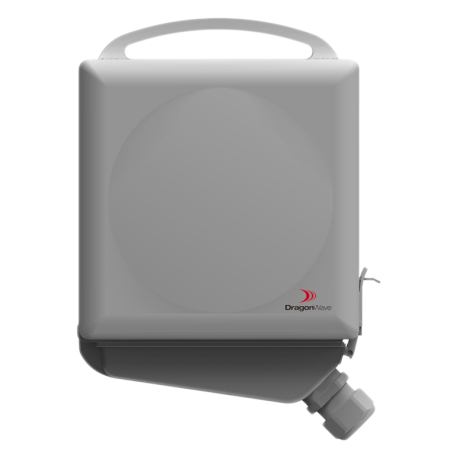Enterprises with more than one building in relative proximity to each other can face network connectivity problems that can be solved with wireless.
However, obstructions like trees and other buildings can degrade signals.
Ottawa-based packet radio manufacturer DragonWave Inc. has turned to non-line of sight (NLOS) technology to offer organizations and carriers a solution in a compact format.
The company said this week that its new Harmony Radio Lite, which runs in sub-6GHz frequencies will solve that and other problems.

Not only will it be offered in a version that runs on licenced 2.3/2.6 and 3.5 GHz bands, and the 4.9 Public Safety bands, there will also be a version for unlicenced 5.8 GHz band. That’s important for enterprises that are looking to save money, Friesen said, especially in Canada where licenced bands are expensive.
The unlicenced band version will be very suitable for organizations wanting to give Wi-Fi coverage to nearby buildings, for temporary wireless broadband sites like concerts or by public safety agencies in emergencies. It will also be LTE-ready, which will appeal to DragonWave’s traditional carrier customers for backhaul.
Because the unlicenced band has lots of company, Friesen said the radios will include interference avoidance technology.
While physically it looks like the company’s Avenue Link Lite radio (about 7.5 inches square including antenna), and they share some components and NLOS capabilities, the Harmony Lite can transmit over longer distances –between 5-10 km if blocked, 20 km if there’s clear line of sight between transmitters.
Three versions of the Harmony Lite will be released over the next eight months. One that runs in the 5.8 GHz band will be first out the door in May, followed by the 3.5 GHZ model in October and the 2.3/2.6 GHz version in January, 2014.
Pricing hasn’t been announced, but Friesen said the company “is looking to have a very aggressive price point” of about half of what DragonWave’s licenced solutions.
The Harmony Lite will transmit up to 230 Mbps (or 115 Mbps up and downlink) with 2×2 MIMO antennas. That’s not as much as a similar radio in the licenced spectrum, Friesen acknowledged, but that’s to be expected in the sub-6 GHz band. On the other hand, there are versions that don’t need a licence and it has NLOS capabilities.
Like all DragonWave radios it has Ethernet switches.
First field trials of the units are expected to start next month.